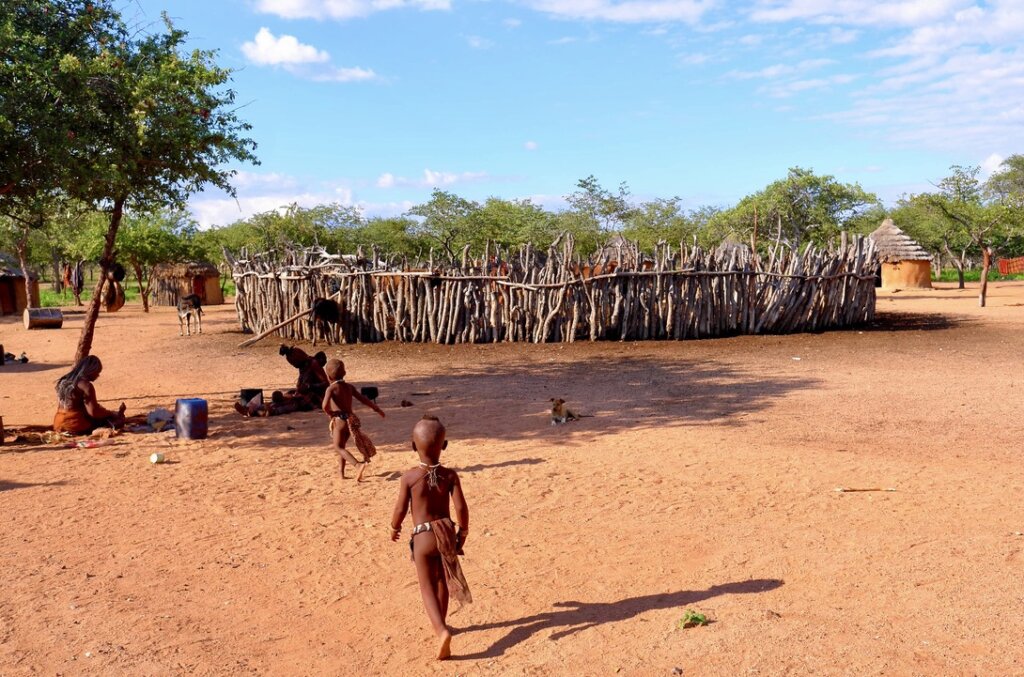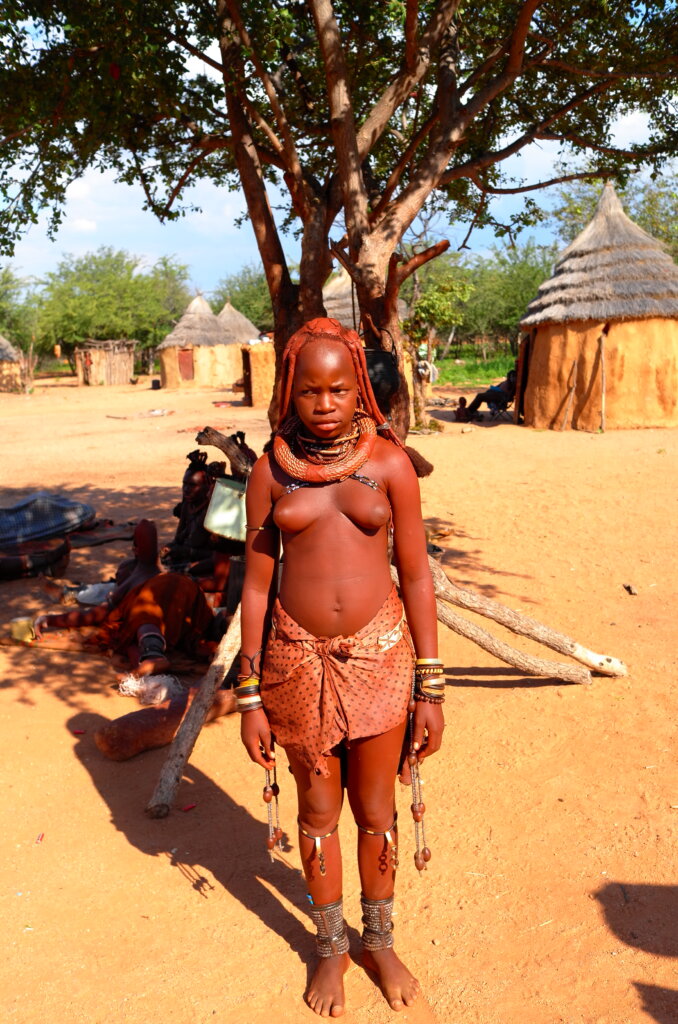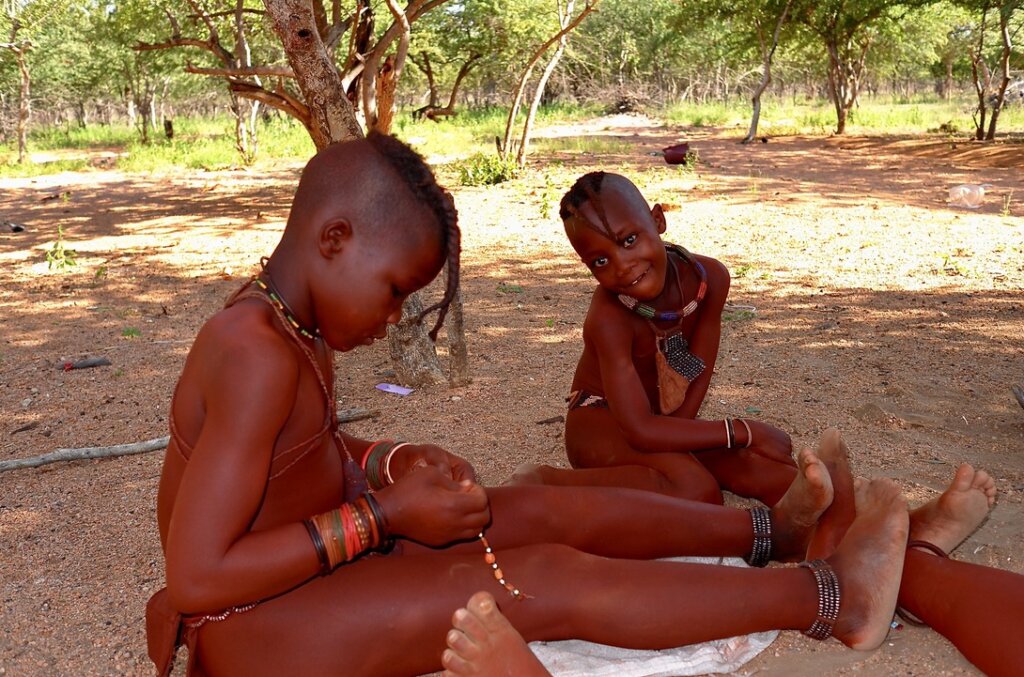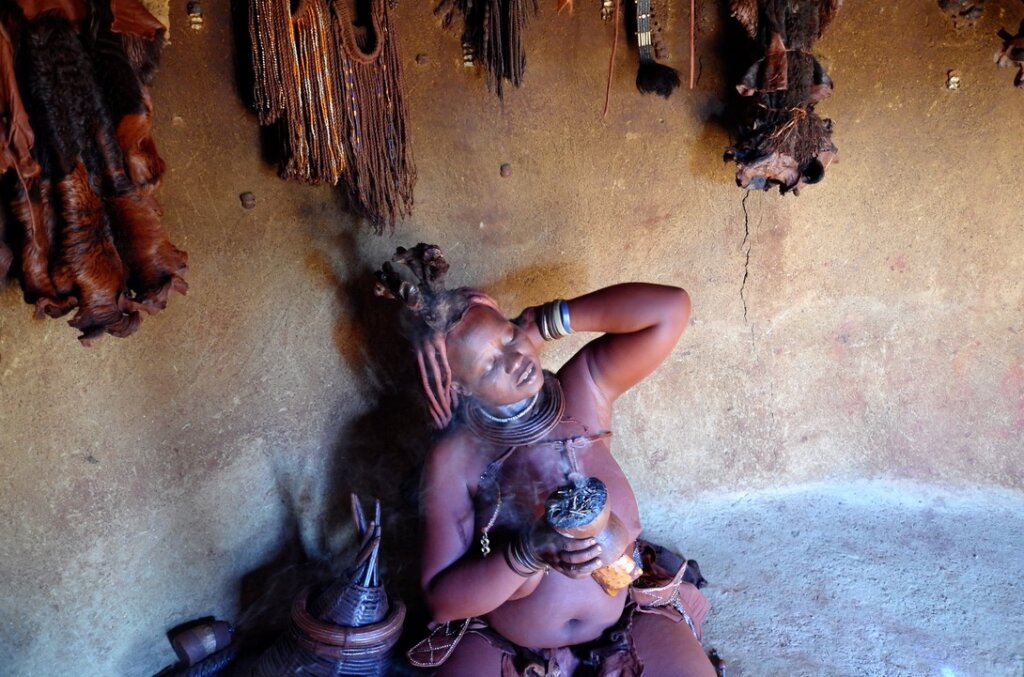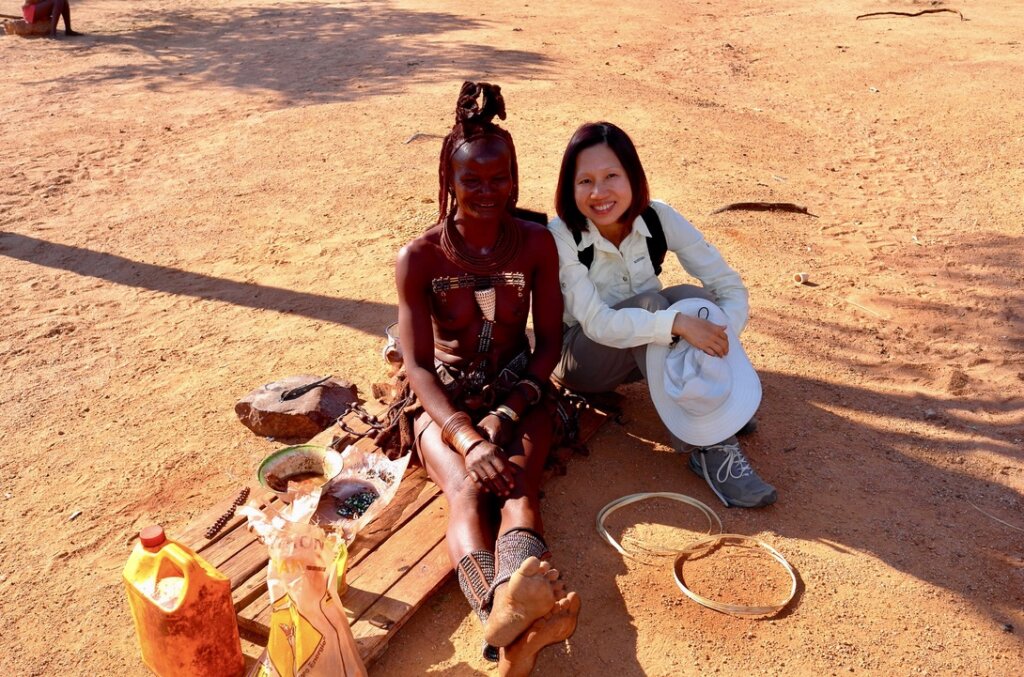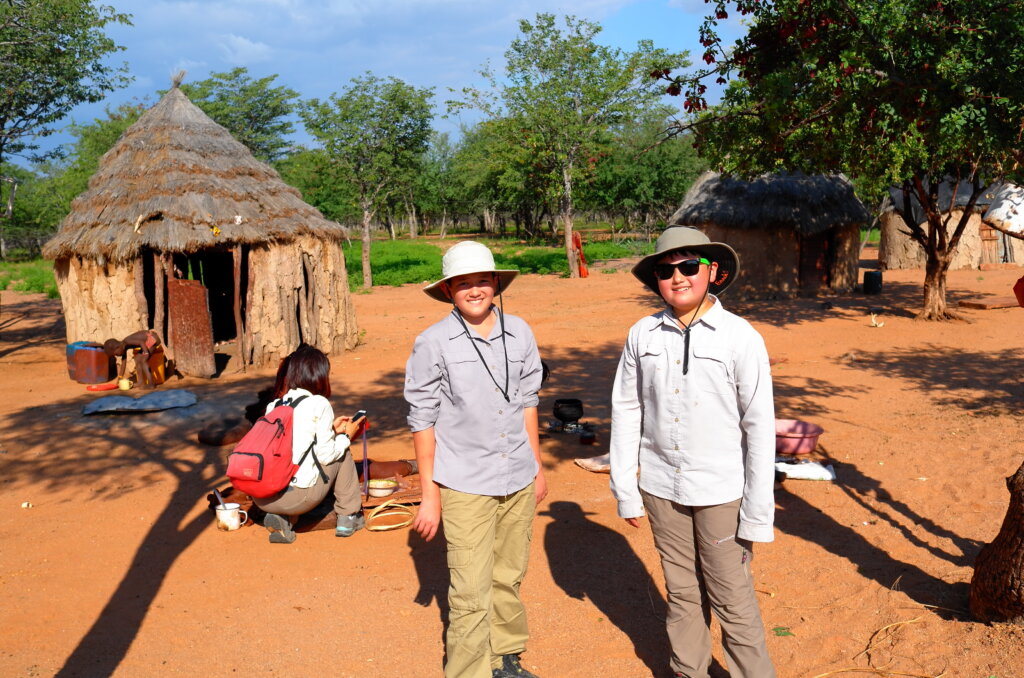The Himba are one of Nambia’s last remaining “primitive” tribes. They live in the Kaokoland region of Northern Namibia, near the Angolan border. A semi-nomadic tribe distinguished by the bright orange paste, a blend of ochre and butter, which they apply to their bodies and hair. The Himba live in small mobile settlements organized around a central kraal where they keep their cattle.
The Himba are one of the few tribes in the world who have adopted a bilateral descent system, which means that a child is a member of both her father’s and her mother’s clans. This is advantageous as it allows her to rely on two sets of families rather than a single family.
In the harsh semi-arid environment where they live, Himba custom decrees that only men are allowed to use water to wash. Women, once they reach puberty, may only wash by smoking themselves with a mixture of aromatic herbs and may never again use water.
One interesting fact about the Himbas is their perception of colour. The Himba language only counts four words to describe colour:
Zuzu: dark shades of green, blue, red, purple ; Vapa: white and yellow ; Buru: some shades of green and blue; Dambu: other shades of green, red and brown.
As a result, the Himba have great difficulty in distinguishing between the colours within a grouping. Evidence to support the fact that language determines the way we think and perceive the world.
